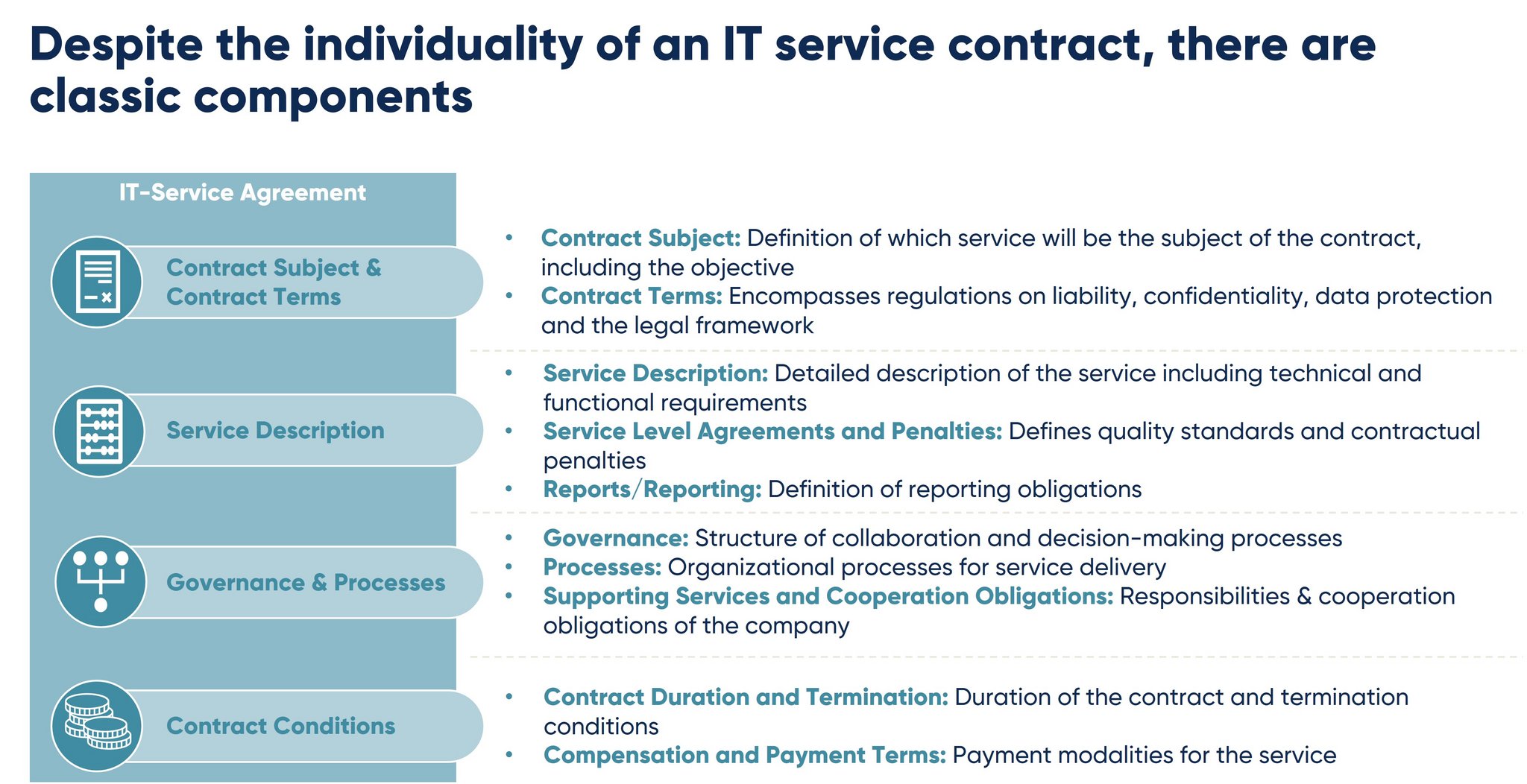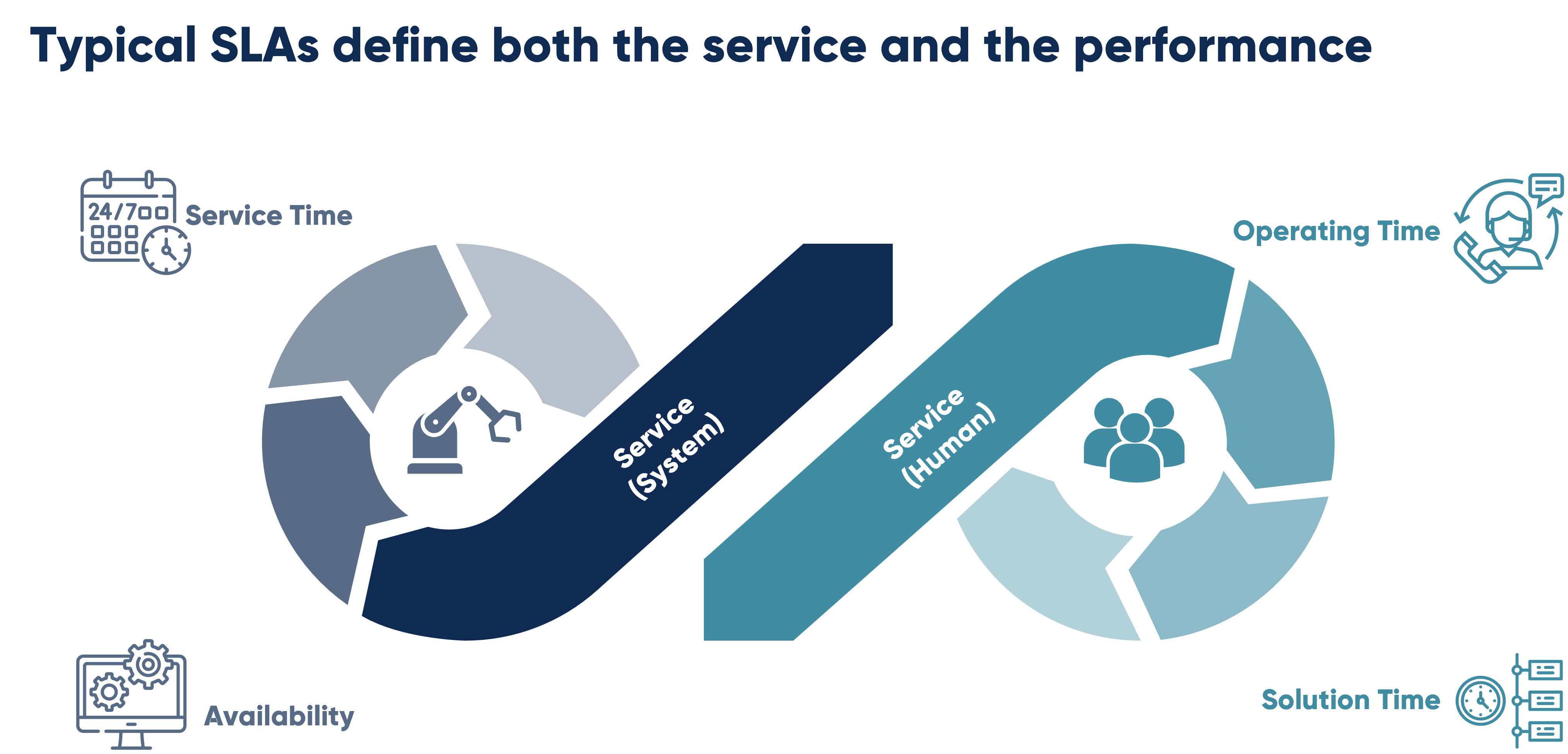The IT outsourcing market is gaining importance; in 2025, revenue of €119 billion is expected, representing 41% of the total European IT service volume. Provider managers face a variety of operational and strategic challenges that concern both optimal management of the service relationship and compliance with SLAs. Efficient contract management ensures transparency and compliance while reducing risks.

Contract management is essential to ensure transparency, efficiency, compliance and minimize risks
Through central storage and clear tracking of all contracts, up-to-dateness is ensured, which significantly facilitates decision-making. Structured contract management not only contributes to cost control but also prevents overpayments and missed discounts. Furthermore, compliance with legal requirements ensures legal security and reduces the risk of disputes. Ultimately, proactive management of contract deadlines and clauses is essential to avoid financial, legal, or reputational risks.
An IT service contract is the foundation for the service relationship between company and provider
The IT service contract determines the service relationship between company and provider.
Despite the individuality of contracts, there are classic components that should not be missing.

Service Level Agreements are the heart of every IT service contract
Service Level Agreements, or SLAs for short, define the quality and availability of services that a provider must deliver and provide clear metrics (e.g., response and resolution times) for service delivery. SLAs offer a solid foundation for:
- Performance Monitoring: Regular reviews of the service based on defined SLAs.
- Implementation of measures: When SLAs are not met, appropriate measures are initiated, such as the application of penalties.

Reporting and penalties: mechanisms for SLA compliance
Through defined reports that document SLA compliance, companies can effectively monitor service provider performance. These reports typically include performance aspects, but also financial and compliance-related data.
- Performance Reporting: Review of SLAs through provided reports - All defined SLAs must be checked via report, requiring effort from both the provider and service management
-
Financial Report: Basis for billing, e.g., reports on quantities (Commercial Management) Compliance/Audit Reports: Evidence of regulatory requirements
When SLAs are not met, penalties are applied. These financial penalties are intended as incentive mechanisms to ensure compliance with agreed performance standards. In the IT service contract, the calculation logic, amount, and application must be defined.
- Amount/Calculation Logic: Flat percentage or graduated according to SLA violation (duration and frequency)
-
Application: Credit to the monthly service amount, possibly limited in relation to the annual amount
When defining penalties in IT service contracts, both feasibility and cost implications are decisive factors. The implementation of penalties should be designed so that they do not create additional administrative burden for provider management. This ensures that penalties can be managed efficiently without unnecessarily burdening operational processes. Additionally, penalty costs are considered in the service price, which is why the amount and scope of these contractual penalties must be carefully weighed. It must be examined whether the criticality of a service justifies the introduction of a penalty to ensure balanced and fair contract design. Such considerations help secure both service quality and the financial stability of the agreement.
A service relationship also provides for cooperation obligations on the company's side
The IT service contract primarily defines the scope of performance and services of the agreement and thus the obligations of the contractor. Since this is a service relationship, obligations on the client's side are also recorded. They include essential cooperation and contribution obligations. Typical obligations include appointing a contact person for communication between commercial and technical areas, providing qualified resources, and technical support. Additionally, granting access to relevant systems and compliance with information and documentation obligations is essential. These obligations not only promote a smooth service relationship between client and provider but also ensure the necessary cooperation for successful service operations.


Quality Promise
Intero Consulting supports you in achieving your contractual goals and maintaining the balance between service quality, security, and costs.
- Assessment of outsourcing contracts using the Intero Outsourcing Contract Agreement (OCA Score)
- Review or creation of applicable contractual frameworks with meaningful requirements that align with operational needs
- Intero Consulting provides support in contract negotiation and in defining appropriate SLAs and penalty clauses
- Training in Service and Provider Management
![[Translate to English:]](/fileadmin/_processed_/3/7/csm_2025-03-21-PORTRAIT-Goeppel-Nadine_6d11904ac0.jpg)
![[Translate to English:]](/fileadmin/_processed_/c/b/csm_2024-11-13-PORTRAIT-Keck-Klara_376c390b6b.jpg)






















